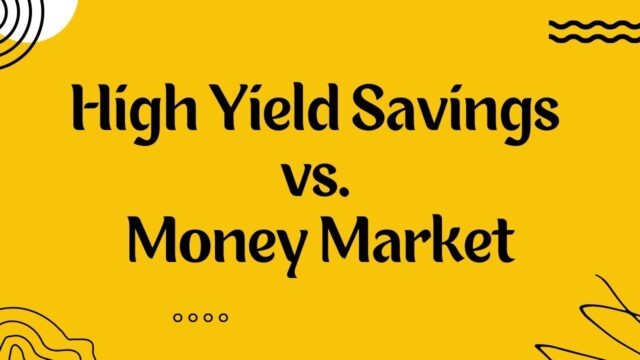
When it comes to maximizing your savings, two popular options on the table are high yield savings accounts and money market accounts. While both boast competitive interest rates, there are key differences that may make one a better choice for your financial goals.
In this blog post, we’ll explore the attributes of high yield savings accounts and money market accounts to help you determine which option is the right fit for your savings strategy.
Section 1: Understanding High Yield Savings Accounts
High yield savings accounts offer low-risk savings opportunities with interest rates that are usually higher than traditional savings accounts.
Unlike a savings account, high yield savings accounts typically come with stricter deposit requirements such as minimum balances or deposit frequency. But, they are also FDIC insured, making them a secure option for your savings.
These types of accounts usually pay out higher interest rates than traditional savings accounts, typically around 0.50 percent to 1.50 percent APY. High yield savings accounts are useful for saving for short and long-term goals or emergency funds.
Section 2: Diving into Money Market Accounts
Money Market accounts, similar to high yield savings accounts, offer a safe place to park your money while earning interest. Unlike savings accounts, money market accounts usually come with check writing capabilities and a debit card allowing you easier access to your money while you earn interest.
Likewise, these accounts often require higher deposits or minimum balances. Their interest rate typically ranges from 0.08 percent to 0.60 percent APY. Similar to savings accounts, Money Market account balance is also insured by the FDIC up to $250,000.
Section 3: Comparing Interest Rates and Requirements
Both High Yield Savings and Money Market accounts offer competitive interest rates. While high yield savings accounts offer higher interest rates, they often require deposit requirements or higher minimum balances than Money Market account.
However, as mentioned earlier, Money Market accounts allow check writing and debit card capabilities unlike savings accounts. Depending on your short and long-term savings goals or emergency fund needs, one account may be more beneficial for your needs than the other.
Section 4: Having Multiple Accounts
Another option to consider is having both account types, allowing your savings options to diversify. With multiple accounts, you can withdraw funds from your money market account while keeping your high yield savings intact, allowing the account to continue to grow. Multiple accounts enable you to meet minimum balance requirements or deposit amounts needed to earn competitive interest rates while providing flexible savings options.
Section 5: Making Your Decision
In conclusion, understanding the differences between high yield savings and money market accounts before making any decisions help in developing an overall savings strategy. While high yield savings accounts may offer potential for higher interest rates, they come with more deposit requirements.
Money Market accounts offer more flexibility in accessing your money while earning interest but may offer a lower interest rate. Lastly, diversifying your savings by utilizing both options may provide your savings a more competitive edge in growing your stability when making financial decisions.
Conclusion: Ultimately, both high yield savings and money market accounts have different features and requirements that can benefit individuals looking to save in different ways. Consider the deposit requirements, interest rates and flexibility of both accounts when making a decision.
Determining which account is better for you may require a more in-depth understanding of your financial status and future goals. Whatever your needs may be, the aforementioned information provides a solid starting point in deciding which account is the best fit for your overall savings strategy.


































